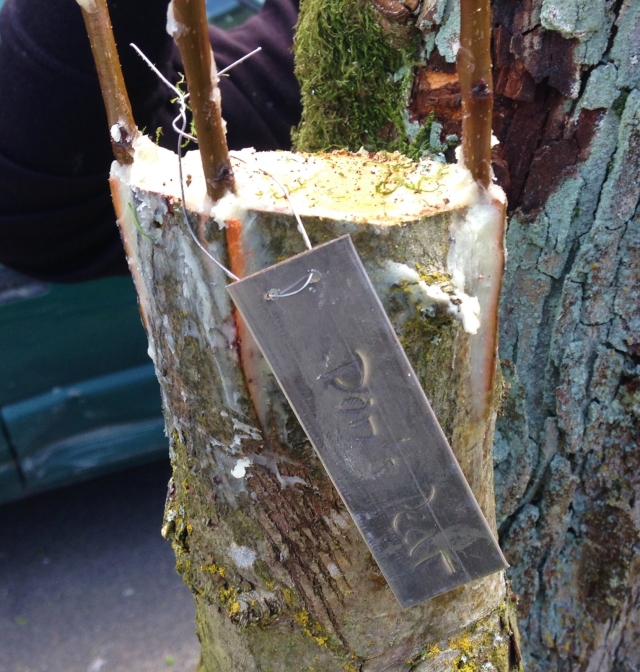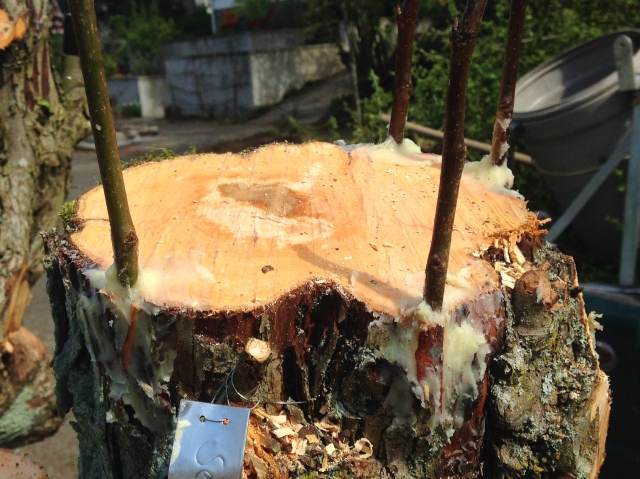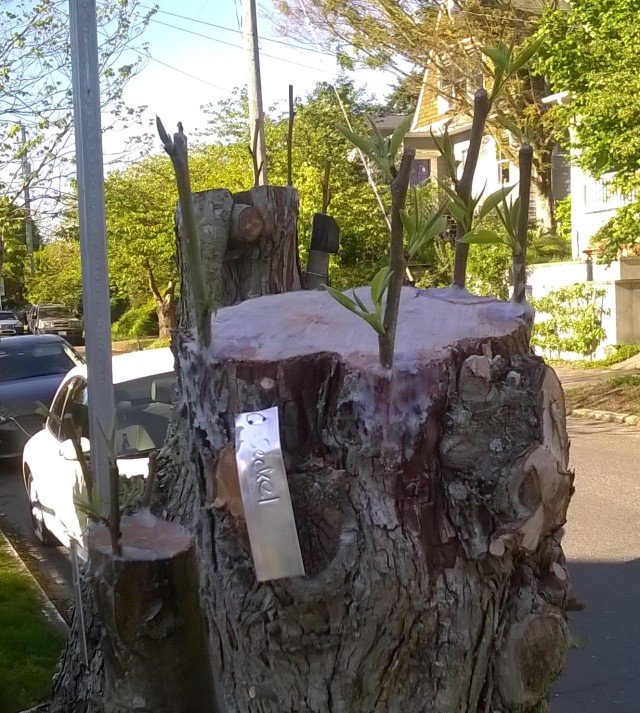When I graft, I am usually bark grafting on established trees. An important step in this process is sealing the insertion point to prevent the grafted scion from drying out. On smaller limbs, electrical tape works well: it exerts pressure on the graft union while sealing it. The downside is that you have to come back later to remove it; and it’s not well suited to larger diameter branches and trunks.
I’ve tried latex paint and commercial grafting wax, but had issues with both of these. I think I’ve finally hit on a good solution: a soft grafting wax that can be slathered on like butter. It’s easy to apply, doesn’t stick to your fingers, doesn’t wick into the graft union, and doesn’t need to be removed like tape.
And the best thing is that you can make it yourself: simply melt 1 part of bees wax in 3 parts of vegetable oil. Here’s what it looks like on a recent job:


Update 5/7/15:
So far, things are looking good. All of the scions have leafed out since I grafted them a month ago. The wax coating did shrink and crack a bit, but it was easily fixed by molding it back in shape. In one spot, a bird had eaten away most of the exposed wax, but it didn’t damage the scion. I think I will be using this technique a lot going forward.











